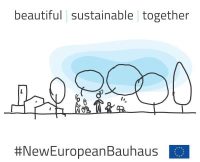There seems to be a “trade-off between the social performance and financial indicators” of microfinance institutions (MFI), said Marcella Corsi, Professor of Economics at Sapienza University in Rome at an EIB Institute seminar.
Microfinance is growing in Europe and could grow even more. The number of loans in 2013 was multiplied by four compared to 2009 (387 812 and 84 523), representing an overall value of EUR 1.528 billion compared to EUR 828 million, according to a European Microfinance Network survey. European MFI are very diverse (non-bank financial institutions, NGOs and foundations) and focus on employment goals such as the promotion of microenterprises or SMEs or the creation of jobs, with an impact on at least 250 000 jobs according to the survey.
However, said Professor Corsi, the preliminary results of a new study seem to indicate that, compared to other other regions of the world, microfinance in Europe is used to a lesser extent for empowerment of specific vulnerable groups (e.g. women, rural communities, the poor, etc.) as there seems to be a trade-off between the social performance (poverty and outreach to women) and the financial performance (revenues, portfolio quality, efficiency, profitability).
A more rigorous analysis of the panel dataset (350 MFI in 30 European countries between 2006 and 2013) is needed to confirm those preliminary results, and efforts are necessary to introduce, at European level, a set of core indicators comparable to converging global practices, she concluded.
Click here to see the presentation.




